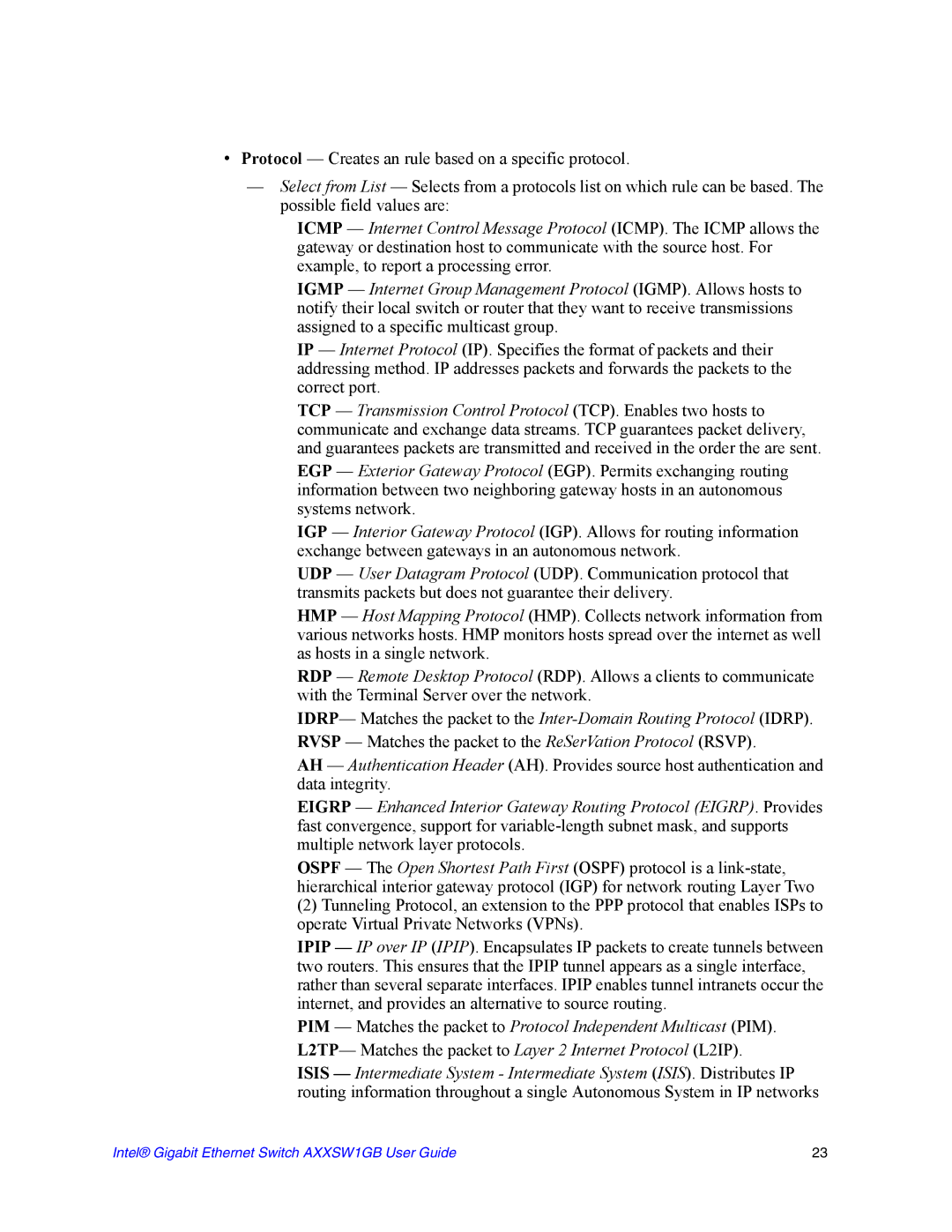•Protocol — Creates an rule based on a specific protocol.
—Select from List — Selects from a protocols list on which rule can be based. The possible field values are:
ICMP — Internet Control Message Protocol (ICMP). The ICMP allows the gateway or destination host to communicate with the source host. For example, to report a processing error.
IGMP — Internet Group Management Protocol (IGMP). Allows hosts to notify their local switch or router that they want to receive transmissions assigned to a specific multicast group.
IP — Internet Protocol (IP). Specifies the format of packets and their addressing method. IP addresses packets and forwards the packets to the correct port.
TCP — Transmission Control Protocol (TCP). Enables two hosts to communicate and exchange data streams. TCP guarantees packet delivery, and guarantees packets are transmitted and received in the order the are sent.
EGP — Exterior Gateway Protocol (EGP). Permits exchanging routing information between two neighboring gateway hosts in an autonomous systems network.
IGP — Interior Gateway Protocol (IGP). Allows for routing information exchange between gateways in an autonomous network.
UDP — User Datagram Protocol (UDP). Communication protocol that transmits packets but does not guarantee their delivery.
HMP — Host Mapping Protocol (HMP). Collects network information from various networks hosts. HMP monitors hosts spread over the internet as well as hosts in a single network.
RDP — Remote Desktop Protocol (RDP). Allows a clients to communicate with the Terminal Server over the network.
IDRP— Matches the packet to the
AH — Authentication Header (AH). Provides source host authentication and data integrity.
EIGRP — Enhanced Interior Gateway Routing Protocol (EIGRP). Provides fast convergence, support for
OSPF — The Open Shortest Path First (OSPF) protocol is a
(2)Tunneling Protocol, an extension to the PPP protocol that enables ISPs to operate Virtual Private Networks (VPNs).
IPIP — IP over IP (IPIP). Encapsulates IP packets to create tunnels between two routers. This ensures that the IPIP tunnel appears as a single interface, rather than several separate interfaces. IPIP enables tunnel intranets occur the internet, and provides an alternative to source routing.
PIM — Matches the packet to Protocol Independent Multicast (PIM). L2TP— Matches the packet to Layer 2 Internet Protocol (L2IP).
ISIS — Intermediate System - Intermediate System (ISIS). Distributes IP routing information throughout a single Autonomous System in IP networks
Intel® Gigabit Ethernet Switch AXXSW1GB User Guide | 23 |
